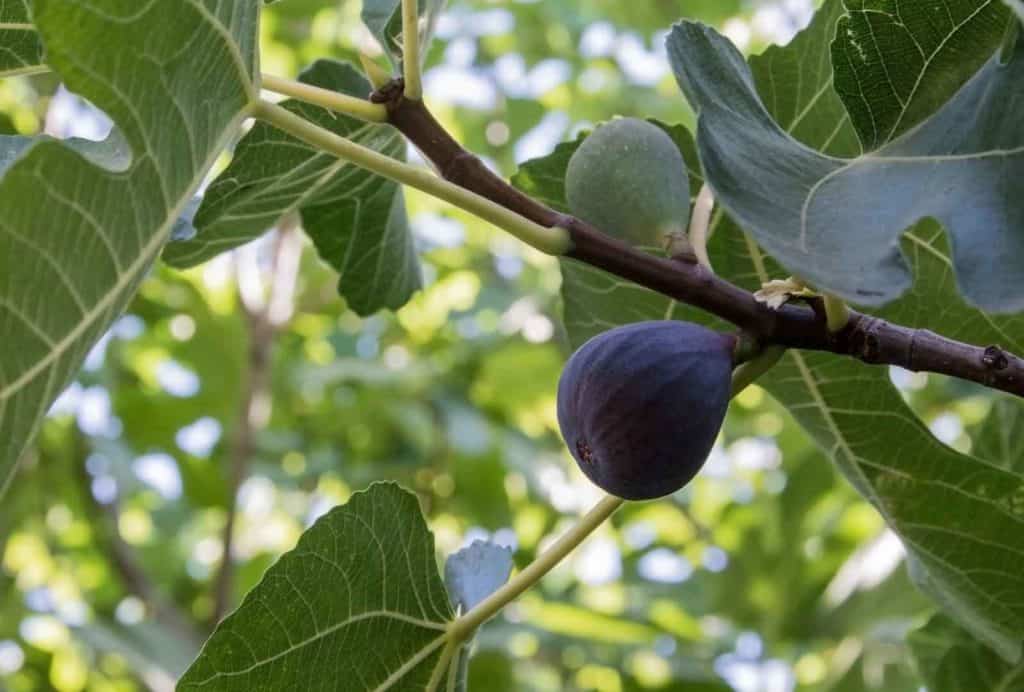Some people see dandelions as trendy salad leaves. Most people, however, see these plants as pesky garden pests.
Dandelions are a part of the plant family called broadleaf perennials. Almost all plants from this family are quite challenging to remove. Once it establishes its taproot, a dandelion will sprout back year after year.
Besides the 10-inch long root, another thing that makes removing dandelions so hard is their seed. These fluffy, far-floating seeds ride the wind currents to conquer the entire garden. Dandelions seem to thrive exactly where we don’t want to see them.
How to get rid of dandelions? How to stop these rampant little yellow weeds from ruining a nicely manicured lawn and keep your yard looking like an inviting place to relax? In this article, we’ll show you how to prevent these pests from invading your yard. See also how to prune a fig bush and how to get rid of other weeds from your lawn.
Contents
The Origin of Dandelions
This plant is native to Asia, Europe, and Africa. It was, however, introduced to other continents by migrating Europeans.
For example, dandelions were introduced to North America because people wanted these flowers to remind them of their old places. Moreover, they were using the plant for medicinal purposes.
When it comes to dandelion’s peculiar name, it is the English corruption of the original French name. In the French language, this plant is called “dent de lion”, which translates as “lion’s tooth”. As you can already guess, this is because of the tooth-like serrations of dandelion’s leaves.
Why Should I Remove Dandelions from my Lawn?
These perennial weeds can take root in lawns, but also on paths and driveways. The dark green base of these plants remains in place all year round. The yellow flowers, on the other hand, appear between early spring and early autumn.
Dandelions grow very quickly. Once they take hold, you’ll have more of these pesky weeds in your garden than you have grass. Their taproots reach deep into the ground and remain there even after you pull out the plant. This allows the roots to regenerate a new plant.
As we already mentioned, the seeds are another problem. With each seed having its own little parachute, they can spread far and wide.
Every dandelion produces between 50 and 200 seeds at one time. What’s more, it can produce more than 2000 seeds during its life cycle. Even the slightest wind will keep them afloat and traveling for hours.
The result of this is a rapid expansion – controlling these weeds is a daunting task.
How to Get Rid of Dandelions?
So, how to put a stop to dandelions?
As with all other weeds, this can be done in two ways – naturally and by using chemicals. We’ll take a closer look at a variety of both natural and chemical methods.
Natural Methods
The quickest and least labor-intensive way to take care of these weeds is to use herbicides. However, a lot of people would rather skip using them. They can be harmful to human health just as they’re harmful to dandelions.
Fortunately, getting rid of dandelions can also be done in a couple of natural ways. Here are some of them:
Use the Lawnmower
The lawnmower, which is probably sitting in your garage, is one of the most efficient dandelion killers. In fact, using this simple machine on a regular basis is the easiest way to deal with this pest. Or if you have one a garden tractor will make short work of these pests.
However, it’s important to mow the lawn while these weeds are still in the flowering stage. Do not let them get to the puffball stage. If you do, lawnmowing will only help with the spread of seeds.
These plants need a lot of sunshine to grow. For that matter, avoid cutting the grass above 2 inches of height. By doing this, you will effectively stunt their growth. Their access to sunshine will be blocked by grass.
For this method to work, timing is essential. If you don’t feel like lawnmowing on a particular day, you can easily go wrong. The key is in having a regular cutting schedule. Also, consider a decent battery powered weed eater – more messy but it gets the job done.
Use a Corn Gluten Meal
The best way to deal with dandelions is to prevent them from growing in the first place. This is where corn gluten comes in. This natural product won’t hurt your children, pets, or the environment.
The only drawback of corn gluten meal is that it doesn’t work on dandelions that have already flowered. Spreading it around the garden before these plants sprout is essential.
Corn gluten meal is effective only for some five weeks. This means that it needs to be reapplied a couple of times throughout spring and summer. In most cases, three or four applications per year are enough.
Although harmless for humans, corn gluten meal can be referred to as a pre-emergent herbicide. By using it as a pre-emptive attack, you’ll have no dandelions to worry about.
Block the Sun
As we already mentioned, dandelions require a lot of sunshine for growth. Anything that prevents them from getting it helps with keeping them off your property.
The easiest way to do this is to use pieces of cardboard or small dark bags. By smothering dandelions with these items, their access to the sun will be blocked.
However, this method can be extremely time-consuming. This is particularly true if there are a lot of these pests on your lawn. Covering all of them can easily take hours.
Another downside is the risk of accidentally covering the grass. So, if you decide to go with this method, be extremely careful.
Use Adequate Tools
Dandelions have roots that reach as deep as 10 inches in the ground. This can turn their removal into a challenging task. If you don’t get their roots, they will surely sprout back again.
One of the best answers to the question of how to get rid of dandelions is to use adequate tools. With these, you’ll be able to remove them completely, together with their roots.
Fortunately, today’s market offers a plethora of tools specialized for dandelion removal. These can be purchased both at your local hardware store and online.
Using a [amazon link=”B00440RQDG” title=”dandelion weeding tool” /] or a [amazon link=”B0007WFG2I” title=”Hori-Hori knife” /] can save a lot of time and backaches. While you’ll have to spend some money on these tools, they’re certainly a worthwhile investment.
Pluck Them by the Heads
If you can’t really do any digging on your lawn, focus on the head. In fact, this is all that you have to do if you have just a couple of dandelions on your property.
However, you’ll have to do this a couple of times throughout the week. This is because dandelions grow back very quickly. You will also have to pluck the heads before they reach the puffball stage.
Once dandelions reach the puffball stage, they can quickly conquer your lawn. This typically leads to dozens of new dandelions.
Weed Burner
A rarely used method of eradicating these pests is the weed burner. This would be a small blowtorch. As you can already guess, it allows one to exterminate dandelions with fire.
A weed burner can be very effective in this regard. However, it can be quite dangerous to operate. Not only can you harm yourself, but also damage the surrounding grass and other objects in your lawn.
If you’ve never used a tool of this type before, don’t go for this method.
Boiling Water
We all know how dangerous boiling water can be. As it turns out, boiling water damages dandelions just like it can damage our skin.
Pouring boiling water over a dandelion will cause it to die in the next 48 hours. The only downside of this method is that it is time-consuming. You’ll need a lot of patience!
Salt
Another simple method of eradicating dandelions is to use salt. This everyday item can be quite efficient when it comes to preventing these plants from ruining your lawn.
The only thing you need to do is to pour some salt over the dandelion’s head. After a couple of days, the weed will wilt and die.
Be careful when applying salt, though. If you’re not careful, you could easily harm the grass and neighboring plants.
Vinegar
Another household item you can use to kill these annoying weeds is vinegar. The standard white one most of us have in kitchens will do the job.
Pour some vinegar into a spray bottle and spray the dandelions with it. You can also spray the holes where these weeds were before you pulled them out. Although time-consuming, this method will keep the pesky yellow flowers off your lawn.
Mulch & Grass Seed
Those with healthy lawns don’t have to worry about annoying weeds at all.
Apply grass seed at all patches where the grass is not thick enough. You’ll improve your lawn’s health and make it thick enough to choke out the dandelions.
Another thing that prevents dandelions from sprouting is a nutrient-rich soil base. As it turns out, these weeds prefer acidic soils. Put some effort into your garden and the dandelions will never appear in the first place.
Unleash the Rabbits
Although relatively unorthodox, this method can actually work wonders.
Purchase a couple of rabbits and a movable fence that you’ll move across the lawn. The rabbits love to feed on dandelions and will take care of this pest in no time.
Chemical Methods
In recent years, a lot of chemicals that have been used in herbicides have been banned. However, that did not stop the industry from developing new herbicides. The new products are adjusted to comply with the new guidelines.
Weed Preventers
As we said, the best way to deal with dandelions is to prevent them from sprouting in the first place. Weed preventers, such as [amazon link=”B06XX7H92R” title=”Scotts Halts Crabgrass & Grassy Weed Preventer” /], can be of great help with this.
Most of them come in a granulated form. For that matter, the only way to properly apply them is by using a spreader. The most potent weed preventers are so effective that you won’t be able to plant anything for months after you use them.
Weed preventers are pre-emptive herbicides and should be applied in late winter. This means that if you already have dandelions in your lawn, they’ll be of little use to you.
Weed Killers
These post-emergent herbicides come in many types and packages. [amazon link=”B00HZA6N36″ title=”Roundup Weed & Grass Killer” /], for example, is packaged in a spray bottle. On the other hand, products such as [amazon link=”B000RUI7L2″ title=”Ortho GroundClear Vegetation Killer” /] comes in jugs of a varying quantity.
Most of the market’s popular options are fast-acting and take care of dandelions very efficiently. The effectiveness of these non-selective herbicides also has a downside. They kill all vegetation they come in contact with.
The best way to counter this problem is to purchase a selective broadleaf herbicide. A product of this type, such as [amazon link=”B0072289CA” title=”Southern Ag 24-D Weed Killer” /], will attack only broadleaf weeds. This turns them into a good option for exterminating dandelions.
If the dandelions have completely overtaken your lawn, there is no point in trying to save other plants. Declare total war and use non-selective herbicides on them. These potent weed killers are also useful for taking care of dandelions in walkways and flower beds.
Conclusion
While pretty in their own way, dandelions can be a huge problem. These weeds spread extremely quickly and can completely ruin a well-maintained lawn. Dealing with these invasive plants can be very tiresome, especially if you have no experience in gardening.
As you can see from the above, there are many different options for eradicating them. Natural and homemade methods are great, but nothing is as effective as chemicals.
However, we still advise going for a non-toxic solution. All of the natural methods we listed above require some elbow grease, but you won’t be putting yourself, your kids, your pets, or other plants at risk of dangerous chemicals.
An even better solution to deal with these pesky weeds would be to maintain a healthy lawn. When managed properly, lawns are more than capable of competing against dandelions. This eliminates the need to use any of the methods we listed above, toxic or non-toxic.
Read also: How to Use Diatomaceous Earth







